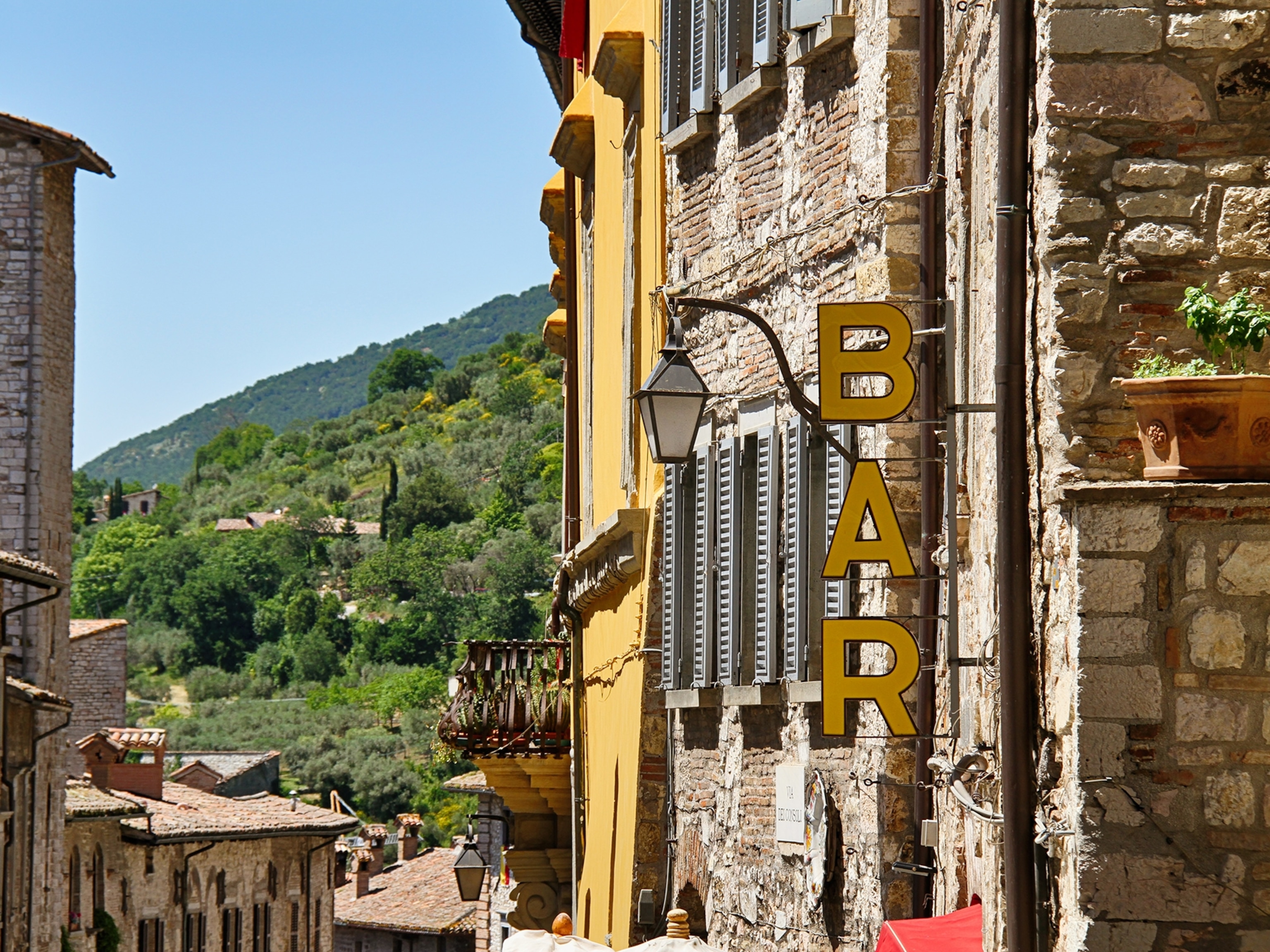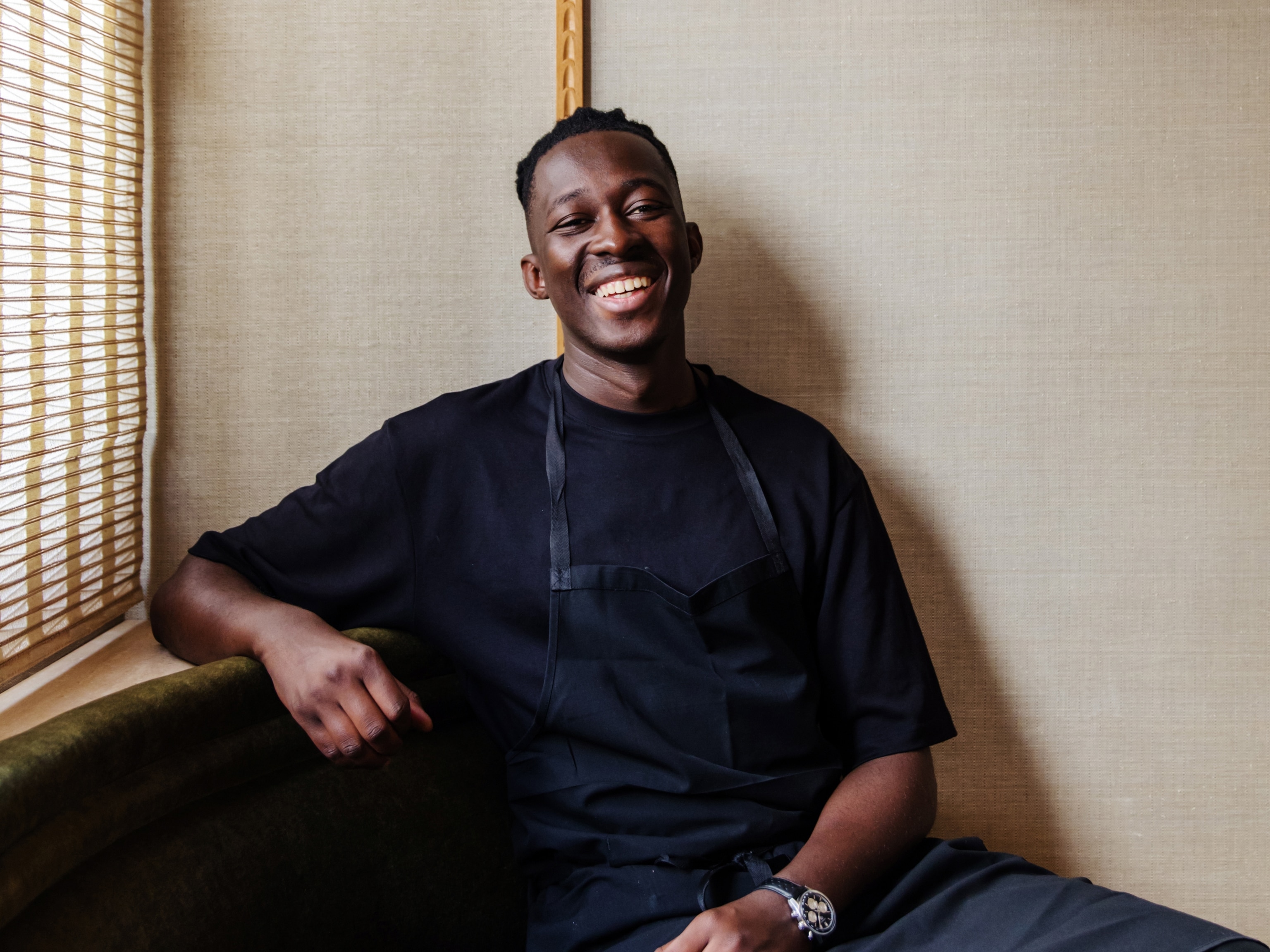Everything you need to know about quiche lorraine
Never mind notions of a light lunch — this French classic has traditionally been considered a hearty, warming dish. And whether or not it should contain cheese is a matter for debate.
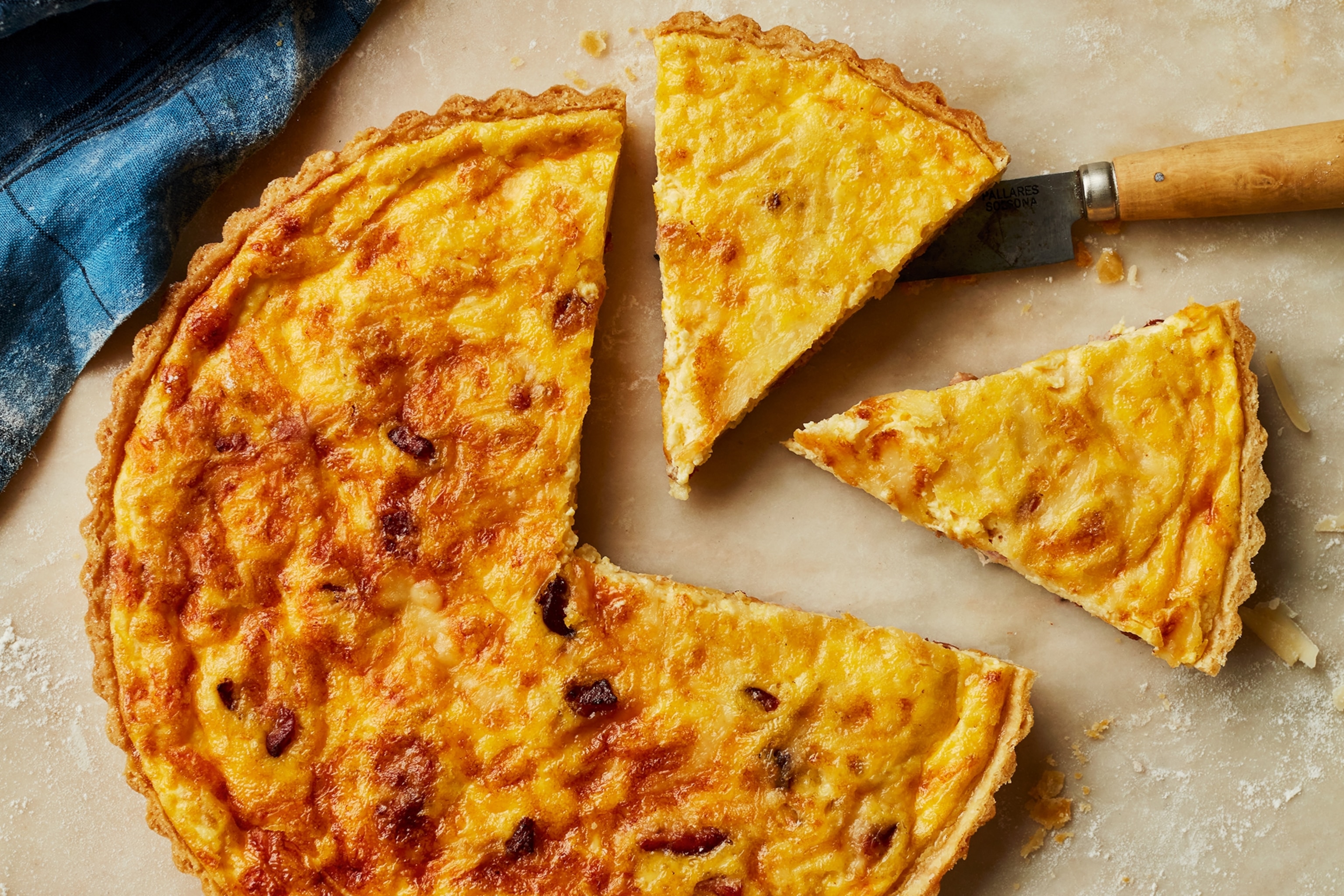
It’s been four decades since we learned that Real Men Don’t Eat Quiche. The tongue-in-cheek book mockingly rebranded a hearty peasant dish as rabbit food, and in the words of the author, humourist Bruce Feirstein, ‘Could John Wayne ever have taken Normandy, Iwo Jima, Korea, the Gulf of Tonkin, and the entire Wild West on a diet of quiche and salad?’ Dated gender stereotypes aside, it’s also an unfair characterisation of the dish — Wayne would have been well fuelled by quiche lorraine, as the genuine article is anything but delicate. In fact, though in Britain it’s often regarded as a light lunch — ‘a must for any summer party, picnic or gathering’, according to Mary Berry — in its eastern French homeland it’s more often served as a warm main course that’s particularly associated with the winter months. And with an average of 25 days of snow, winter in Lorraine is a serious business, requiring serious fuel.
There’s a lot about quiche that doesn’t fit with its popular reputation. Though it may seem quintessentially French, its origins are less clear cut. Its distant roots probably lie in the baked cheesecakes of ancient Rome, but the first recognisable ancestors of the modern quiche can be found in the medieval kitchens of Europe, where the term ‘custarde’ was used to describe a ‘coffyn’ (pastry case) filled with beaten eggs and cream and flavoured with pieces of meat or fruit. These could be sweet or savoury, and were often very rich affairs. The ‘crustade with flesch’ included in the 15th-century East Anglian recipe collection held by Corpus Christi College Oxford contains chopped veal ribs and chicken joints in a spiced custard sweetened with honey and wine. This, as editor and translator Constance B Hieatt observed, ‘must have presented a problem to mannerly medieval diners, with all those bones baked into a custard tart’.
The crustade might bear a strong family resemblance to the quiche, but until the 19th century, the word ‘quiche’ (which is probably the plural of ‘küche’ in the Alsatian dialect, itself a diminutive of the German ‘kuchen’, or cake) suggested a quite different dish. Historian Guy Cabourdin tracked references back as far as the 1605 accounts of the hospice of Saint-Julien in the city of Nancy, where it seems to have described something much thinner and crisper — more like the tarte flambée still enjoyed in neighbouring Alsace than a modern quiche. Like the tarte flambée, this ‘quiche’ would have been made from scraps of bread dough topped with a thin layer of everyday ingredients, which back then would have meant eggs, cream and herbs, rather than luxuries such as bacon. Jeanne Loesch, an expert on the cuisine of the Grand Est region, calls early quiche ‘a Lorraine version of pizza’, and a 1607 recipe for a plum or damson example makes it clear that, like the custarde, it came in many flavours.
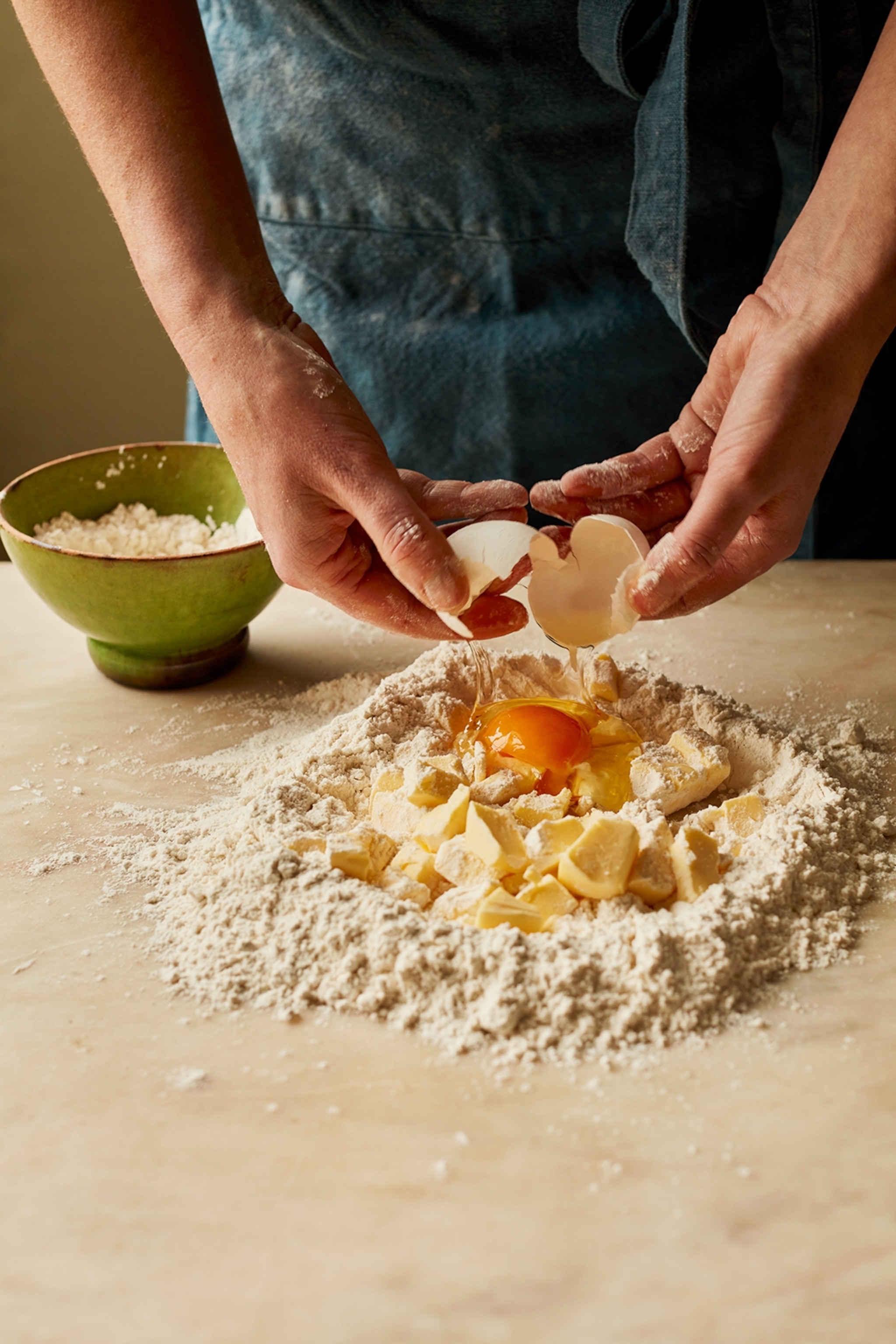

Although it is occasionally made with a bread dough crust to this day, a shortcrust or puff pastry case is now far more common, and it was this development — probably spearheaded by professional bakers rather than home cooks — that allowed for a more generous filling, turning the quiche from a snack into a full meal. This modern quiche was one of the local favourites that refugees fleeing the Franco-Prussian war brought to Paris in the late 19th century, along with the brewing traditions they put to use in the city’s first brasseries. Once they began serving a little food alongside beer, quiche found a whole new audience — and it wasn’t long before it was so thoroughly assimilated into the French repertoire that the great chef Auguste Escoffier considered it worthy of inclusion in his 1903 Guide Culinaire; only a miniature cheese-flavoured variety appears in the much abridged 1907 English translation, however.
Despite these changes, purists in Lorraine insist a real quiche is only ever filled with three things: bacon, eggs and creme fraiche, which rules out the broad bean and cheese version chosen by King Charles and Queen Camilla as their official coronation dish. That’s more of a savoury tart, says Évelyne Muller-Dervaux, Grand Master of the Confrérie de la Quiche Lorraine (the Brotherhood of Quiche Lorraine). Fellow brotherhood member Laurent Miltgen-Delinchamp told The Times last summer that even in France the term ‘quiche’ is widely misused, and ‘frankly it shocks me less when Anglo-Saxons do that than when the French do it’.
Unfortunately, Laurent should be used to it by now, because, although the British food writer Elizabeth David declared she found cheese made the dish rather ‘coarse and heavy’, everyone from the late, legendary French chef Paul Bocuse to Gordon Ramsay disagrees. French celebrity chef Philippe Etchebest seemed to welcome the outrage when he published his new recipe last year, telling viewers of the accompanying video that “I can already hear the purists crying foul because we don’t put cheese in quiche lorraine” before adding defiantly: “Well, I do, because I like cheese.” The hashtag #quichegate quickly consumed French social media.
These chefs do all at least have the decency to use French cheese — unlike Prue Leith, who puts strong cheddar in her ‘real quiche lorraine’, while the Hairy Bikers suggest adding parmesan to the pastry. James Martin, meanwhile, tops his with tomatoes; Jamie Oliver’s magazine once published a recipe for ‘quiche leekraine’; and Marie Laforêt’s Vegan Bible gives a plant-based version flavoured with tamari soy sauce, malted yeast and smoked tempeh ‘lardons’ in a custard made of tofu, soy cream and tahini. Onions — acceptable further east in Alsace, a region famous for its zewelkueche (onion tart) — are frowned upon by those who wear the ceremonial robes of the Brotherhood; an apron, a traditional hat and a medal with a large quiche emblazoned on it.
This organisation, which exists to showcase and promote the ‘true’ quiche lorraine, holds a biennial Fête de la Quiche in the town of Dombasle-sur-Meurthe — complete with a baking competition, live music and a procession, though these days minus the election of a Mademoiselle Quiche to preside over the festivities. It recently secured funding for road signs to welcome visitors to the official capital of quiche lorraine, and is currently seeking recognition from UNESCO as part of the region’s intangible cultural heritage.
The brotherhood’s rival, APQ (Association for the Protection of the Quiche) has a more liberal attitude. At the annual Quiche World Championships, judged by a panel of food journalists, restaurateurs and bloggers to the standard set by ‘the king of cooks and cook of kings’, Auguste Escoffier, anything goes. As long as it contains eggs, cream and salt it’s a quiche: indeed, though they concede bacon is the best-known addition, all alternatives are permitted ‘and even encouraged’.
Only one quiche lorraine made the podium in 2023, narrowly beating bacon, cheese and mushroom, and spinach and goat’s cheese versions to the top spot. That winning quiche lorraine, from Parisian charcuterie house Maison Verot, contained grated emmental, a Swiss cheese. Truly nothing is sacred — but then, despite the best efforts of the good people of Lorraine in recent years, the shape-shifting quiche has never been a dish to stick to the rules.
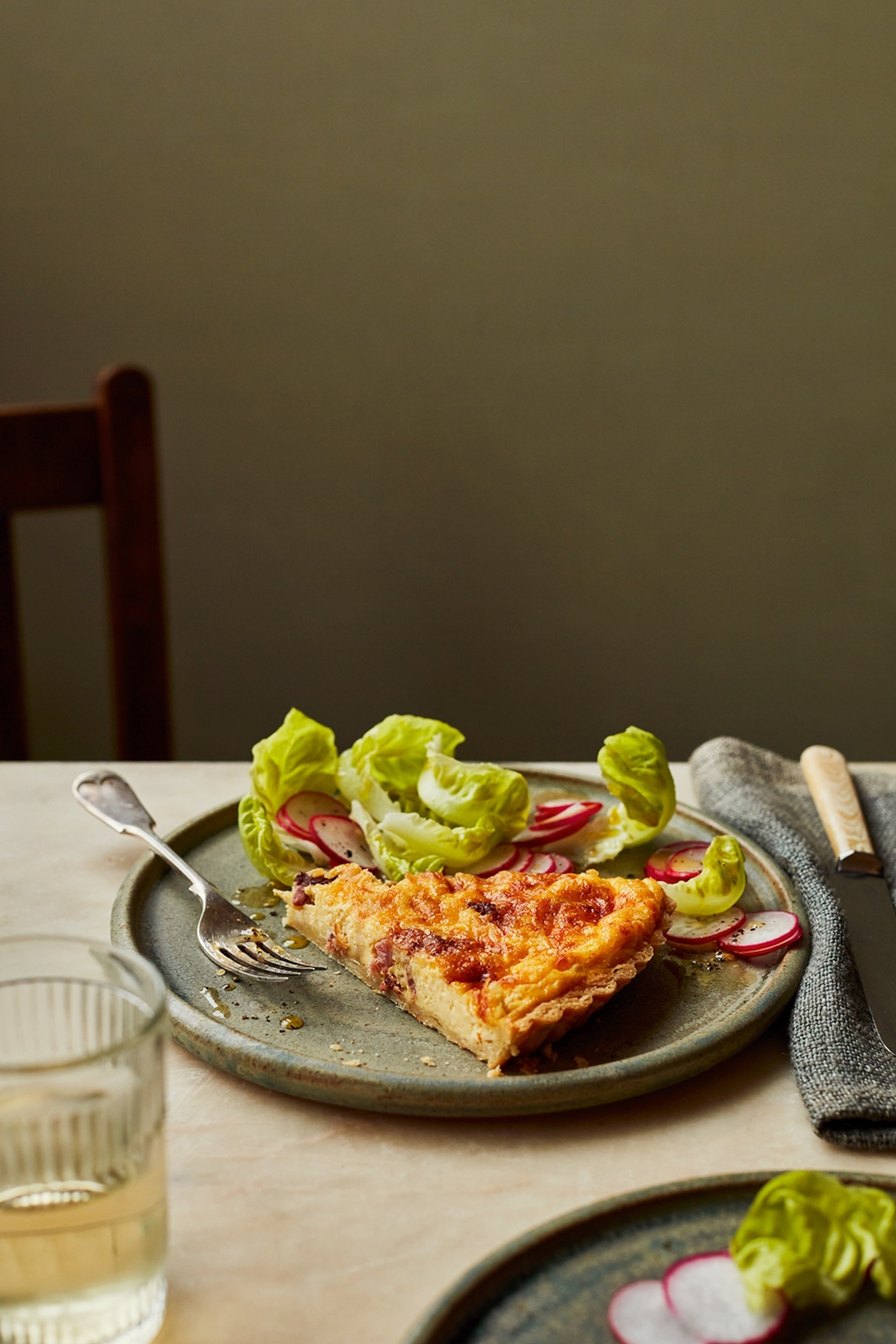
Recipe: Michel Roux’s quiche lorraine
This quiche should be served warm, not piping hot. The recipe makes around 480g pastry, but you’ll only need 300g — the rest will keep in the fridge for a week or in the freezer for up to three months.
Serves: 8-10
Takes: 1 hr 20 mins - plus chilling
Ingredients
20g butter, to grease
Flour, for dusting
½ egg, beaten
For the pastry:
250g plain flour
125g butter, cut into small pieces and slightly softened
1 egg
1 tsp caster sugar
½ tsp fine salt
For the filling:
2 tsp groundnut oil
100g salted belly pork, rind removed, cut into small lardons, blanched and refreshed
2 small eggs, plus 3 egg yolks
300ml double cream
pinch of freshly grated nutmeg
1½ tbsp kirsch (optional)
100g comté cheese, freshly grated
Method
1. To make the pastry, heap the flour on a clean work surface and make a well in the middle. Put the butter, egg, sugar and salt in the middle of the well and mix together with your fingers. Draw the flour into the centre a small amount at a time and work the mixture with your fingertips to form a grainy texture. Add 40ml cold water and mix until the dough begins to hold together. Use your palm to push the dough away from you 4 or 5 times until smooth. Roll the pastry into a ball, wrap in cling film and put in the fridge.
2. Butter the inside of a tart ring (24cm in diameter and 2.5cm high), then place on a small baking tray and put in the fridge. Butter the inside of a tart ring (24cm in diameter and 2.5cm high), then place on a small baking tray and put in the fridge.
3. Heat oven to 180C, 160C fan, gas 4. Use a small knife to cut off any excess pastry above the top of the ring. Prick the base with a fork in a dozen or so places, then line the base and sides with greaseproof paper. Fill with ceramic baking beans, rice or dried beans and bake for 15 mins.
4. Lift out the paper and baking beans. Brush the insides of the pastry case with the beaten egg and return to the oven for 5 mins. Remove from the oven and set aside to cool, leaving the pastry case in the ring. Keep the oven at 180C, 160C fan, gas 4.
5. For the filling, heat the oil in a frying pan over a medium heat, add lardons and cook for 1 min. Tip into a sieve and set aside.
6. Put the eggs, egg yolks and cream in a bowl and mix with a whisk, without overworking. Add the nutmeg, some salt and pepper and the kirsch, if using.
7. Scatter the lardons and cheese into the pastry case. Pour in the egg mixture, filling almost to the top, and transfer to the oven for 20 mins. Lower the heat to 160C, 140C fan, gas 3 and cook for 20 mins more.
8. As soon as the filling is cooked (a skewer inserted into the centre will come out clean), remove from the oven and carefully lift the tart ring off. If using a tin, wait until it’s cooled slightly before placing on top of a tin or jar and gently pulling the ring of the tin down, leaving the quiche on the base.
9. Use a large palette knife to slide the quiche onto a plate.
Food stylist: Polly Webb-Wilson
To subscribe to National Geographic Traveller (UK) magazine click here. (Available in select countries only).





